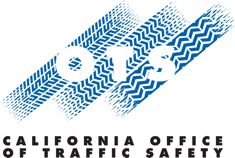The annual observational study of California drivers found almost 8 percent were using electronic communications devices while behind the wheel during 2017.
That’s down from almost 13 percent in 2016, the state Office of Traffic Safety reported.
 Overall, researchers cited a “considerable decrease” in distracted driving in California between 2016 and 2017.
Overall, researchers cited a “considerable decrease” in distracted driving in California between 2016 and 2017.
Officials and researchers credited the improvement to the state’s recent rewrite of its electronic distracted driving law and the effect of years of public safety campaigns. A change in survey methodology also may have had an effect.
Not all of the electonic device use was illegal, as the figures included estimates of drivers using hands-free devices. Handheld use, which is illegal in California, was reported at 3.6 percent, down from 7.6 percent in 2016.
Since the study methodology was “observational,” that suggests 3.6 percent of California drivers would be using handheld devices at any given time (during daylight hours) — not that only 3.6 percent of motorists break the distracted driving law. That figure would certainly be higher.
While almost all electronic driving laws address handheld use, most safety experts — such as those at the National Safety Council — say any cell phone use behind the wheel is distracting and dangerous.
Three California counties showed handheld use “significantly above the state average”: San Bernardino (leading at 8.2 percent), Contra Costa and San Joaquin.
Researchers found that “manipulating a handheld device” was down in 2017, but talking on cell phones was up. (Still, manipulating the device was the study’s most cited behavior — interpreted as texting & driving, but also including checking email and using GPS.)
This trend held true among drivers with young children in the vehicle, with cell phone talking increasing in 2017 but texting apparently lower. Researchers suggested parents might find talking on a phone “more acceptable” than texting with kids on board.
“Being alone in a vehicle greatly increased the likelihood of engaging in electronics use,” the study said. “Local roads” were most frequently the site of electronics usage.
Drivers of SUVs and vans were singled out as offenders. They were 60 percent more likely to be cited as using a device than passenger car drivers.
Researchers noted their sample size was higher than in past years and included more counties. This shift away from eyeballing busy urban centers may have contributed to some of the reported drops in electronic device use, they said. Researchers used 204 sites at all 17 counties, adding up to about 20,000 observations.
California State University, Fresno, conducted the 2017 study, its first year with the annual OTS report, which dates back to 2011.
California’s latest rewrite of its electronic distracted driving law, inspired by a court ruling, puts the focus on use of the handheld electronic device itself, rather than the activity (such as texting). AB 1785 was signed into law by Gov. Jerry Brown in September 2016 and went into effect the following January.
> Read the annual observational study of California drivers
> Read more about distracted driving laws in California


Pretty weak study. This contradicts studies that show big increases in cell phone use while driving and the recent stat that claims that 51% of fatal accidents are related to cell phone distraction. This study missed the fact that last year Bluetooth sales exploded. It’s the first year that sales of Bluetooth headsets surpassed sale of wired headset.